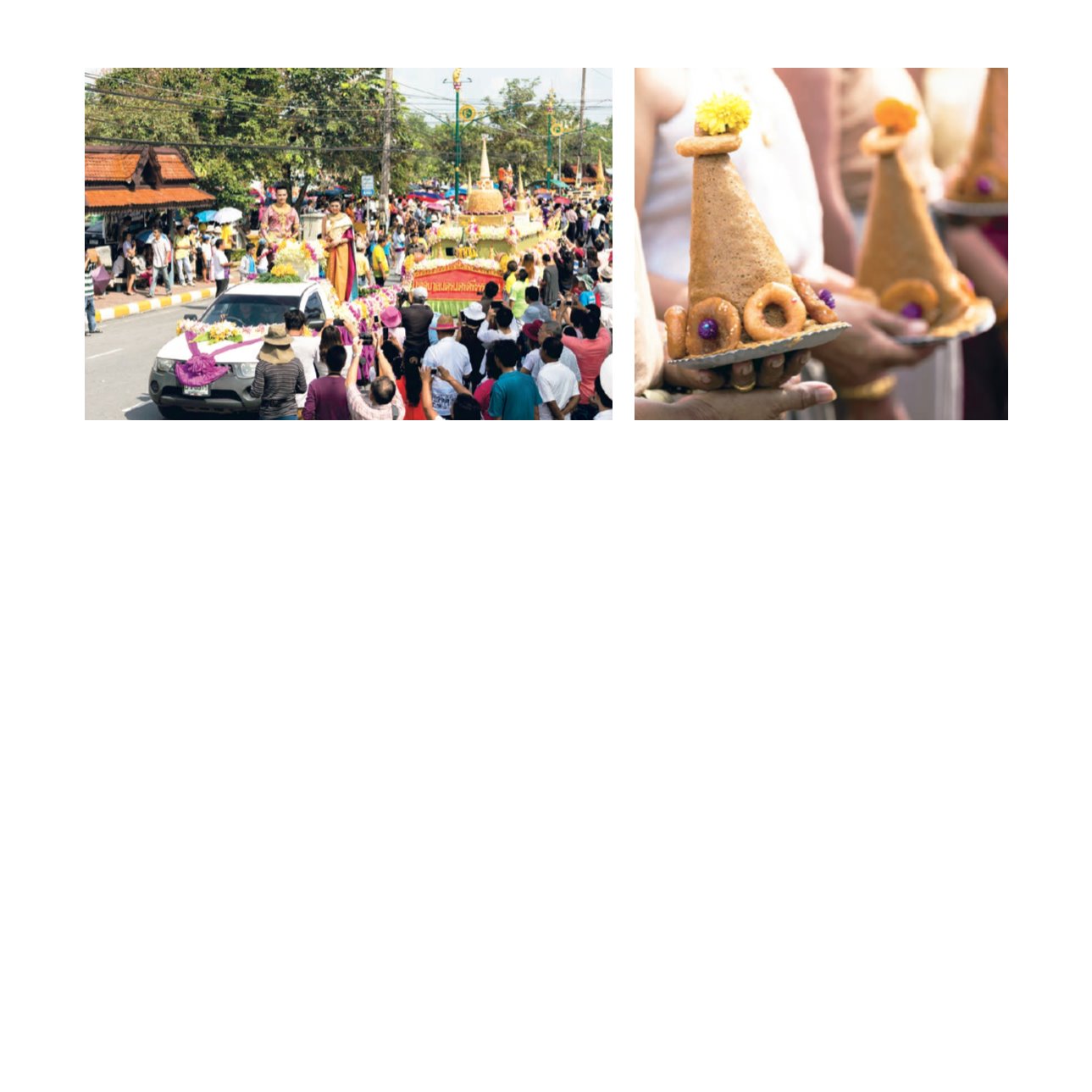

52
|
Culture Ways of Life and Wisdom
“
The rainy season of the
Southern Thailand begins
around the tenth month.
It is a difficult time for monks.
Villagers therefore arrange
their food offerings in the form
of ‘Hmrub’ so that the temple
can keep them as supplies
for the monks during
the rainy season.
”
In addition to the purpose of dedicating merit to deceased relatives, the tenth
month is a rainy season when agricultural crops start to bloom. Making merit
by bringing agricultural product offerings to monks is a blessing for themselves and
families. It also supports monks the necessity during the rainy season when they are
not convenient to go out for collecting alms.
In addition to their reverence for ancestors, the virtues will be shared to other
spirits as in the ceremony of Tang Pret-Ching Pret which is held after the Hmrub
ceremony and food offerings. Villagers will divide Kanom (sweets) to put on the temple
court, the base of big tree or the wall of temple, known as
“Tang Pret”
. The time
villagers in rush to take Kanom is called
“Ching Pret”
. It is believed that people who
consume the sweets will also gain merit.
Currently the Tenth Lunar Month Festival is considered the largest ceremony
of the Southern Buddhists to return home to express their gratitude and reverence
for ancestors annually. The center of the festival is in Muaeng Nakhon Si Thammarat,
regarded as the Buddhist Kingdom since the ancient times and still preserved the
tradition excellently.
• The Tang Pret-Ching Pret Ceremony is emerged from a belief in
Buddhism that the spirit of people making bad deeds will be come
hungry ghosts (Pret/Preta) in hell, only surviving on the merit dedicated
by someone. Each year, on the first day of the tenth lunar month, the
hungry ghosts will have the opportunity to return to the human world to
seek merit from relatives and back to hell on the 15
th
day of the waning
moon of the 10
th
lunar month.


















